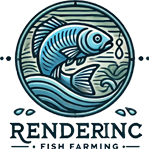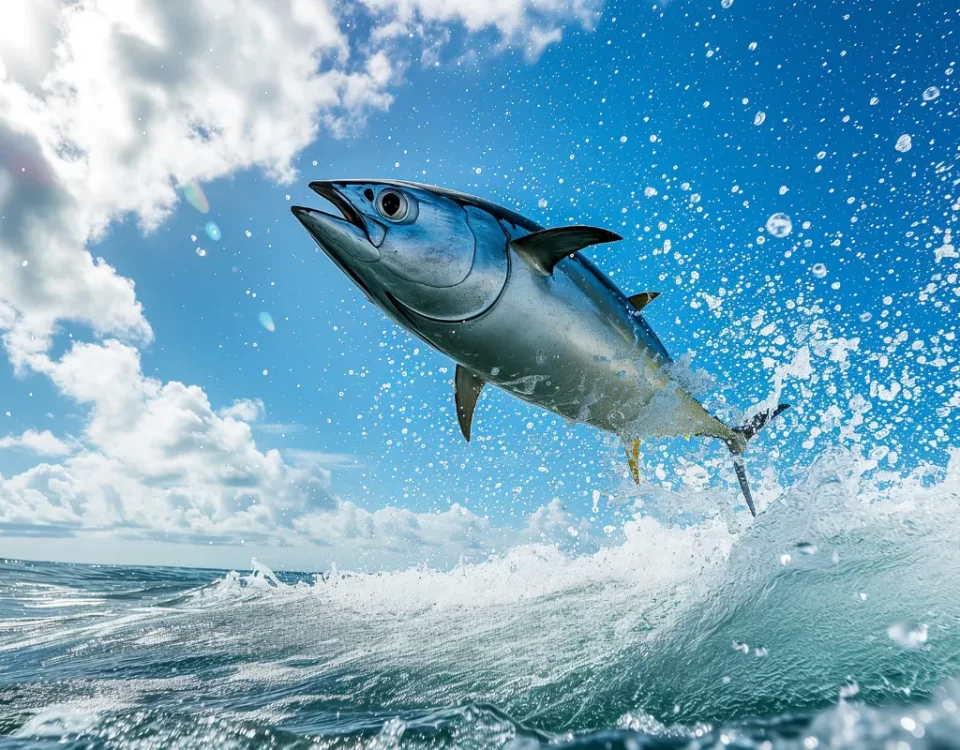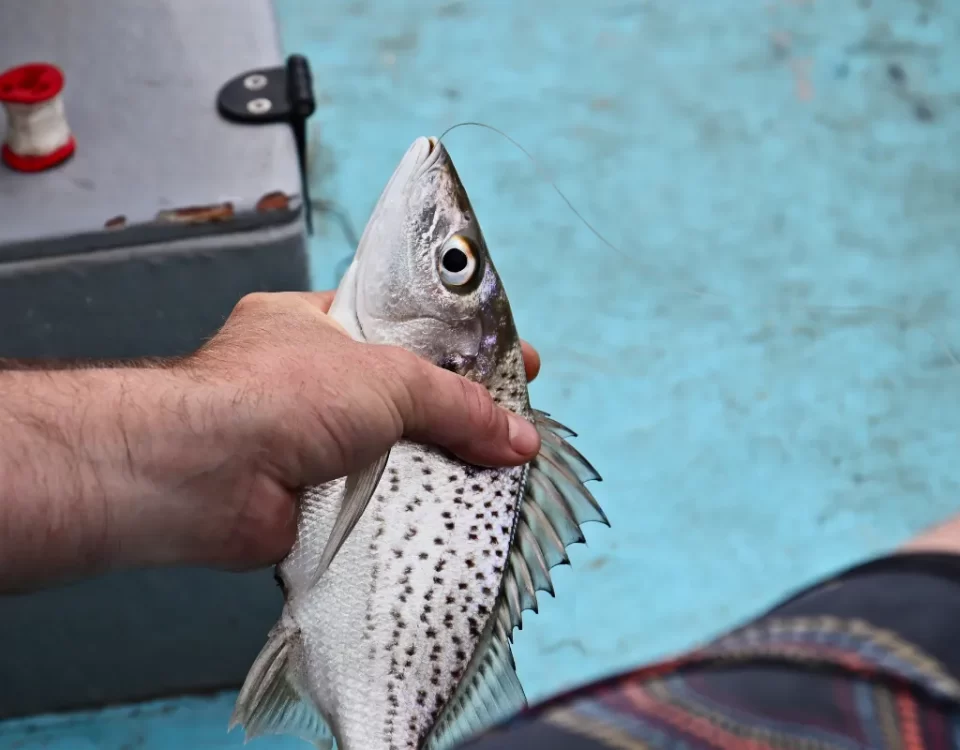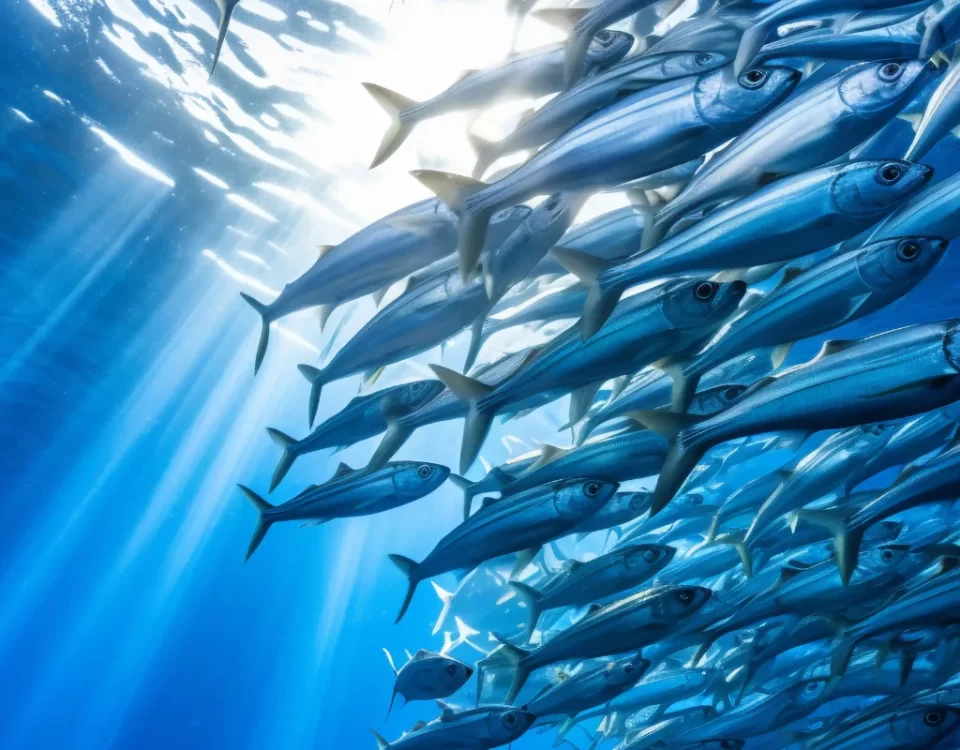Aquaculture Automation: Technology for Smarter Fish Farming

Innovative Aquaculture Systems: Maximizing Efficiency and Sustainability
August 25, 2024
The Role of Fish Farming in Global Food Security
August 26, 2024Aquaculture, the practice of cultivating aquatic organisms in controlled environments, plays a vital role in the global food industry by meeting the growing demand for seafood. As wild fish stocks face depletion due to overfishing and environmental factors, aquaculture provides a sustainable solution to ensure a consistent supply of fish for consumption. With the world’s population steadily increasing, the importance of aquaculture in maintaining food security cannot be overstated.
Aquaculture automation is a cutting-edge technology that is revolutionizing the way fish farming is conducted. By integrating automation systems into aquaculture operations, farmers can achieve higher levels of efficiency, productivity, and sustainability. These systems utilize sensors, drones, robotics, and data analytics to monitor and optimize various aspects of fish farming, such as water quality management, feeding schedules, and disease detection.
Advantages of Aquaculture Automation
Increased Efficiency: Automation streamlines day-to-day tasks, reducing the need for manual labor and human intervention. This results in cost savings and enables farmers to focus on higher-value activities that enhance overall farm productivity.
Improved Monitoring: Automation systems continuously monitor critical parameters such as water temperature, oxygen levels, and fish behavior. This real-time data collection allows farmers to make informed decisions promptly, leading to better management practices and healthier fish populations.
Sustainability in Fish Farming
Environmental Benefits: Aquaculture automation reduces the environmental impact of fish farming by optimizing resource usage and minimizing waste. By using precise feeding systems and water quality monitoring, farmers can ensure that fish receive optimal nutrition while minimizing excess feed that pollutes water bodies.
Economic Viability: The implementation of automation technologies in aquaculture can improve the economic viability of fish farming operations. By increasing efficiency and reducing operational costs, farmers can achieve higher profit margins while maintaining sustainable practices for long-term success.
The Benefits of Aquaculture Automation
In the realm of aquaculture automation, technology has revolutionized the way fish farming operations are conducted. The implementation of automated systems has brought about a myriad of benefits that have significantly enhanced the efficiency and productivity of fish farms. By integrating advanced technology into aquaculture practices, increased productivity and streamlined operations become achievable goals.
Increased Productivity and Efficiency in Fish Farming Operations
One of the primary benefits of aquaculture automation is the significant boost in productivity and efficiency that it brings to fish farming operations. Automated systems such as feeding machines and water quality sensors streamline processes that traditionally required manual labor, resulting in more precise and consistent management of fish farms. By automating tasks like feeding schedules and water quality monitoring, farmers can ensure that their fish receive optimal care and nutrition, leading to healthier stock and increased yields.
Reduced Labor Costs and Reliance on Manual Labor
Aquaculture automation also offers the advantage of reducing labor costs and decreasing the reliance on manual labor in fish farming operations. By automating repetitive tasks and routine maintenance activities, farmers can reallocate their workforce to more specialized roles that require human expertise. This shift not only reduces labor expenses but also minimizes the risk of human error, resulting in more reliable and consistent outcomes in fish farming endeavors.
Improved Monitoring and Control of Key Parameters
Another significant benefit of aquaculture automation is the enhanced monitoring and control of key parameters crucial to the success of fish farming, such as water quality and feeding practices. Automated systems equipped with sensors and remote monitoring capabilities allow farmers to closely track essential metrics in real-time. By having instant access to data on water temperature, dissolved oxygen levels, and feed distribution, farmers can make timely adjustments to ensure optimal conditions for fish growth and development.
Enhanced Data Analysis and Decision-Making
Moreover, aquaculture automation enables fish farmers to collect and analyze vast amounts of data that can inform better decision-making processes. By leveraging data analytics tools integrated into automated systems, farmers can gain valuable insights into the performance of their fish stocks and the overall health of their operations. This data-driven approach empowers farmers to make informed choices regarding feed formulation, stocking density, and environmental management, ultimately leading to more sustainable and profitable fish farming practices.
Key Technologies Used in Aquaculture Automation
Aquaculture automation has revolutionized fish farming by incorporating cutting-edge technologies to improve efficiency, reduce labor costs, and ensure optimal conditions for fish growth. Key technologies deployed in aquaculture automation include automated feeding systems, remote monitoring sensors, AI-driven analysis, and robotics. Let’s delve into each of these technologies to understand their roles in transforming the fish farming industry.
Automated Feeding Systems
Automated feeding systems have significantly enhanced the precision and efficiency of feeding practices in aquaculture. These systems utilize sensors and programmable logic controllers to dispense feed based on specific parameters such as fish size, behavior, and dietary requirements. By precisely regulating feed portions, automated feeding systems help prevent overfeeding, reduce wastage, and promote uniform growth among fish populations. Furthermore, these systems can be customized to deliver feed at optimal times to ensure maximum consumption and minimize nutrient loss, thereby improving feed conversion ratios.
Remote Monitoring Sensors for Water Quality and Fish Health
Remote monitoring sensors play a crucial role in maintaining optimal water quality and fish health in aquaculture operations. These sensors continuously collect data on parameters such as temperature, dissolved oxygen levels, ammonia concentration, and pH in real-time. By tracking these indicators, farmers can promptly identify and address any deviations from optimal conditions that could jeopardize fish health and growth. Additionally, advanced sensor technologies can be integrated with automated systems to trigger alarms or automatic adjustments when preset thresholds are breached, enabling quick intervention and preventing potential crises.
AI-Driven Analysis for Optimizing Feeding Schedules and Growth Rates
Artificial intelligence (AI) has revolutionized aquaculture management by enabling data-driven decision-making processes. In aquaculture automation, AI-driven algorithms analyze vast amounts of data collected from sensors, historical records, and environmental factors to optimize feeding schedules and growth rates. These algorithms can identify patterns, predict optimal feeding times, adjust feed compositions, and calculate growth projections with unprecedented accuracy. By harnessing the power of AI, fish farmers can tailor feeding regimes to individual fish needs, maximize efficiency, and ultimately improve overall productivity.
Robotics for Tasks Such as Harvesting and Cleaning
Robotics technology has transformed labor-intensive tasks in aquaculture operations, particularly in harvesting and cleaning processes. Automated robotic systems equipped with computer vision and manipulator arms can efficiently sort, harvest, and process fish with precision and speed. Moreover, robotic cleaners can autonomously remove debris, algae, and waste from fish tanks, ensuring cleaner environments and reducing the risk of diseases. By automating these repetitive tasks, robotics not only boost operational efficiency but also free up labor resources for more critical roles, enhancing overall productivity in fish farming endeavors.
Incorporating these advanced technologies into aquaculture automation not only streamlines operations but also fosters sustainable practices, improves fish welfare, and elevates the productivity and profitability of fish farming enterprises. As the industry continues to embrace innovation, the possibilities for enhancing efficiency and sustainability in aquaculture are boundless.
Case Studies: Successful Implementation of Aquaculture Automation
Aquaculture automation has revolutionized the way fish farming operations are managed, leading to increased efficiency, improved profitability, and better environmental sustainability. Let’s delve into two compelling case studies that showcase the successful implementation of aquaculture automation in real-world settings.
Example 1: Norwegian Fish Farm
One exemplary case comes from a fish farm in Norway that has integrated automated feeding systems into their operations. By leveraging advanced technology, this farm has been able to significantly reduce waste and enhance the growth rates of their fish. The automated feeding systems are programmed to dispense precise amounts of feed at optimal times, ensuring that the fish receive the nutrition they need without excess feed going to waste. This not only leads to cost savings for the farm but also contributes to a more sustainable and eco-friendly farming practice.
Example 2: Thai Shrimp Farm
In another inspiring case, a shrimp farm in Thailand has adopted remote monitoring sensors to monitor key parameters in real time and prevent disease outbreaks. By closely tracking variables such as water quality, oxygen levels, and temperature, the farm can proactively identify any potential issues and take preventive measures to maintain the health of the shrimp population. This proactive approach not only minimizes the risk of disease but also promotes overall shrimp well-being and growth. The use of remote monitoring sensors has transformed the farm’s operations, enabling them to achieve higher yields and better quality shrimp.
These case studies highlight the tangible benefits of incorporating aquaculture automation into fish farming practices. By embracing technology and innovation, farms around the world are reaping the rewards of increased efficiency, reduced environmental impact, and improved profitability. As the aquaculture industry continues to evolve, these success stories serve as powerful examples of how automation can lead to smarter and more sustainable fish farming practices.
Challenges and Limitations of Aquaculture Automation
In the realm of aquaculture, the advancement of automation technology presents a realm of possibilities for enhanced efficiency and productivity. However, challenges and limitations exist that must be carefully considered before diving into full-scale automation implementation.
Initial Investment Costs
One of the primary hurdles in adopting aquaculture automation is the significant initial investment costs associated with implementing such advanced technology. From installing sensors and monitoring systems to integrating automated feeding and water quality control mechanisms, the expenses can quickly add up. For many fish farmers, especially smaller operations, the upfront capital required for automation may be prohibitive and require careful financial planning.
Technical Issues and Skilled Personnel
Another obstacle in transitioning to automated fish farming systems is the need for skilled personnel to operate and maintain these complex systems effectively. Automation technology relies heavily on data interpretation, troubleshooting, and system optimization, tasks that require specialized knowledge and training. Without competent staff members on hand, technical issues may arise, leading to system malfunctions and downtimes that could jeopardize the health of the fish population.
Potential Risks and System Failures
Despite the promises of enhanced performance, aquaculture automation also brings forth potential risks that cannot be overlooked. System failures, whether due to software glitches, mechanical breakdowns, or connectivity issues, pose a real threat to fish farmers relying on automation. A sudden malfunction in feeding systems or water circulation controls could disrupt the delicate balance within the aquaculture environment, leading to stress, health issues, and even fish loss if not promptly addressed.
Regulatory and Environmental Concerns
Beyond the technical aspects, aquaculture automation must also navigate regulatory and environmental hurdles that impact its implementation. Compliance with industry standards, environmental regulations, and animal welfare guidelines adds another layer of complexity to automated fish farming operations. Ensuring that automation technology aligns with sustainability practices and ethical considerations is crucial to maintaining a positive reputation within the aquaculture industry.
The Future of Aquaculture Automation
As the demands for sustainable and efficient fish farming practices increase, the aquaculture industry is witnessing a significant rise in the adoption of automation technology. This trend is not limited to a specific region but is observed worldwide, indicating a shift towards modernization and improvement in fish farming techniques. The integration of automation in aquaculture operations brings a plethora of benefits, including optimization of resources, reduction of manual labor, and enhanced monitoring and control of fish farm environments.
Growing Adoption of Automation Technology
The growing adoption of automation technology in fish farming is evident in the increasing use of sensors, cameras, and real-time monitoring systems across aquaculture facilities. These tools enable farmers to monitor essential parameters such as water quality, feed distribution, and fish behavior with greater precision and accuracy. By leveraging automation, fish farmers can optimize their operations, leading to improved production efficiency and economic sustainability.
Emerging Trends: Use of Drones for Monitoring and Data Collection
An emerging trend in the field of aquaculture automation is the utilization of drones for monitoring and data collection. Drones equipped with high-resolution cameras and sensors can fly over fish farms to gather valuable information on fish health, biomass distribution, and environmental conditions. This innovative approach not only reduces the time and effort required for data collection but also provides real-time insights that can aid in quick decision-making for farm management.
Potential for Further Advancements in AI and Robotics
Looking ahead, the aquaculture industry holds immense potential for further advancements in Artificial Intelligence (AI) and robotics, which have the capacity to revolutionize fish farming operations. AI algorithms can analyze vast amounts of data, enabling predictive analytics for disease detection, feed optimization, and growth prediction. Moreover, robotic systems can be employed for automated feeding, harvesting, and infrastructure maintenance, reducing human intervention and enhancing overall productivity and sustainability in aquaculture.
In conclusion, the future of aquaculture automation is bright and promising, with ongoing advancements paving the way for a more efficient, environmentally-friendly, and profitable fish farming industry. By embracing innovative technologies and automation solutions, fish farmers can unlock new opportunities for growth and success in meeting the growing global demand for seafood.
Aquaculture automation technology has emerged as a game-changer in the realm of fish farming, offering a myriad of benefits that are vital for enhancing efficiency and promoting sustainability within the industry. By embracing automation solutions, fish farmers can optimize their operations in ways that were previously unimaginable. From automated feeding systems to remote monitoring capabilities, these technological advancements pave the way for a more streamlined and effective approach to fish farming.
One of the key advantages of aquaculture automation is its ability to improve feed management. Automated feeding systems can deliver precise portions of feed at optimal times, promoting better growth rates and reducing feed waste. This not only enhances the overall health and well-being of the fish but also contributes to cost savings for the farmer. By harnessing the power of automation, fish farmers can achieve higher production yields while minimizing environmental impact.
Furthermore, automation technology plays a significant role in enhancing water quality management in fish farms. Automated monitoring systems can continuously track key indicators such as oxygen levels, pH, and temperature, enabling farmers to respond swiftly to any deviations. This proactive approach not only ensures a healthier environment for the fish but also helps prevent potential disease outbreaks. In this way, automation technology acts as a safeguard for both the fish and the business itself.
As we look towards the future of fish farming, it becomes increasingly apparent that embracing automation is not just a choice but a necessity for long-term success. The industry is evolving rapidly, and those who fail to adapt risk being left behind. By investing in automation technology, fish farmers can position themselves at the forefront of innovation, setting the stage for sustainable growth and profitability in the years to come. Embrace automation, and unlock the full potential of your fish farm.

Michael Rivers is an experienced aquaculture enthusiast with over a decade of hands-on knowledge in fish farming and sustainable aquatic systems. Passionate about promoting eco-friendly practices, he shares his expertise on fish breeding, water management, and the latest advancements in aquaculture technology. Through his blog, Michael aims to help both beginners and seasoned fish farmers achieve success in their ventures while contributing to the growth of sustainable food production.




